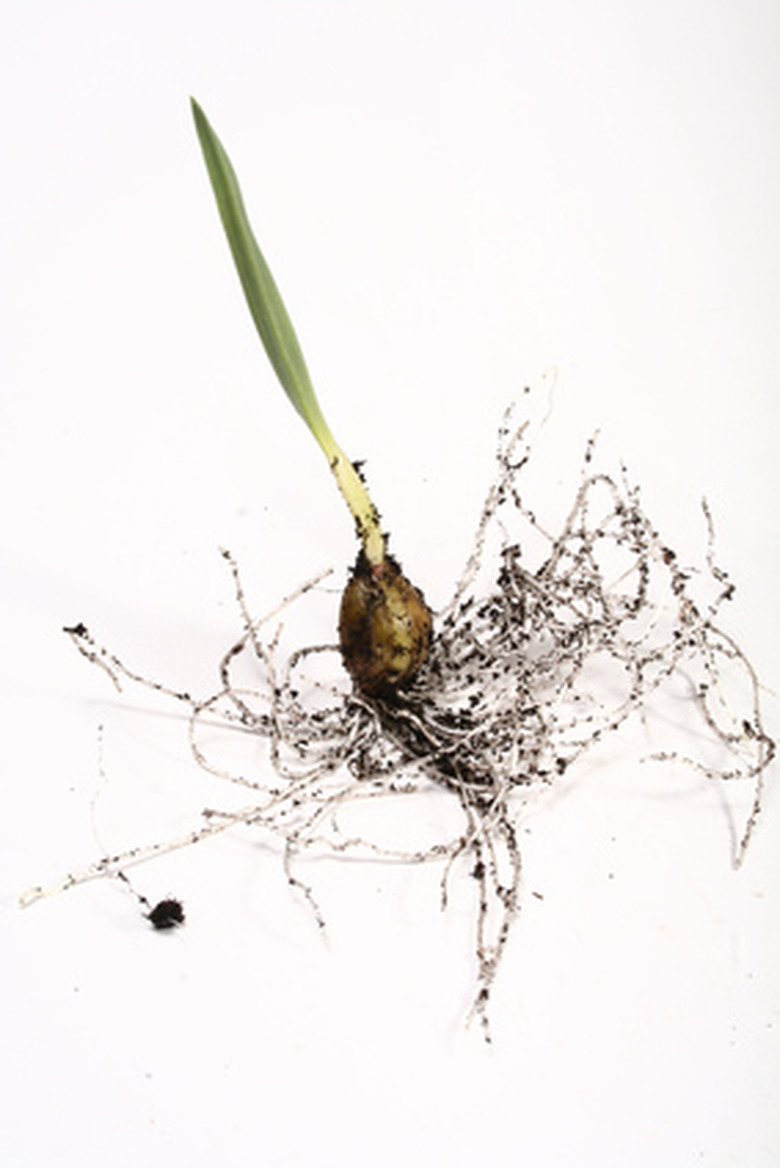Parts Of The Garlic Plant
Garlic is from the same family as onions, with relatives including leeks and chives. Garlic roots do not penetrate deeply into the soil, making good, consistent watering, and proper drainage important. The plants like a rich soil with plenty of nitrogen and full sun. Plant the bulbs in the fall, and you can begin to harvest your first shoots the following spring. Garlic plants have three major parts: the scape, leaves, and bulb.
Scape
The garlic plant's scape is the stem end bearing the plant's flower head. Seen at the upper end of the stem above the leaves, the scape has the look of a long, gently curving swan's neck. A small bulbil forms at the base of the scape. This has the appearance of a miniature garlic bulb.
- Garlic is from the same family as onions, with relatives including leeks and chives.
- Seen at the upper end of the stem above the leaves, the scape has the look of a long, gently curving swan's neck.
Scapes are found only on hard-neck varieties of garlic. The ability to produce this part of the plant has mostly been bred out of soft-neck garlic. Scape's flavor is mild, and they can be harvested for use in cooking. Use them to replace onions, or in addition to onions and garlic bulbs in dishes. The University of Minnesota Extension lists Rocambole and Purple Stripe (Glazed and Marbled) as common choices and Porcelain, Asiatic, Creole, and Turban as more exotic options.
Leaves
Green shoots that appear in spring after cold winter months are the first leaves. They begin to give way to warmer temperatures. The long, blade-shaped leaves alternate as they come off the stem. Washington State University Extension describes garlic leaves as V-keeled because of their sharply folded appearance. The leaves of soft-neck varieties may be braided to hang and cure the bulbs after harvest. The leaves turn brown near the time bulbs are ready for harvest. Soft-neck varieties include Dixon, Polish White, and Inchelium.
- Scapes are found only on hard-neck varieties of garlic.
- The leaves of soft-neck varieties may be braided to hang and cure the bulbs after harvest.
Bulb
The bulbs are the rounded portions of the plant that sits below ground level. The stem attaches to the bulb's neck. The roots form a small cluster on the bulb's underside. The bulbs have a papery covering that separates each individual clove, offering protection. The meaty cloves are the part of the plant most often used in cooking. They are peeled, smashed, chopped, and added to impart a savory flavor to dishes. According to the Montana State University Extension, the bulbs contain protein and minerals.
- The bulbs are the rounded portions of the plant that sits below ground level.
While all of the types of garlic produce a bulb, soft-neck varieties like Artichoke and Silverskin often yield better, larger bulbs because they do not waste any of the plant's energy on creating a scape.
